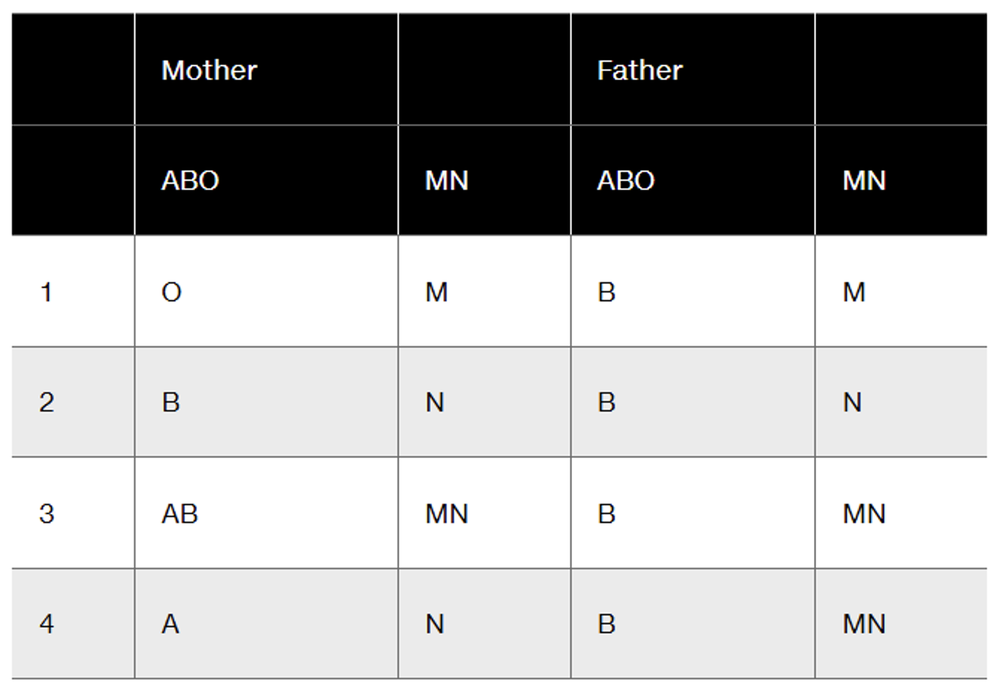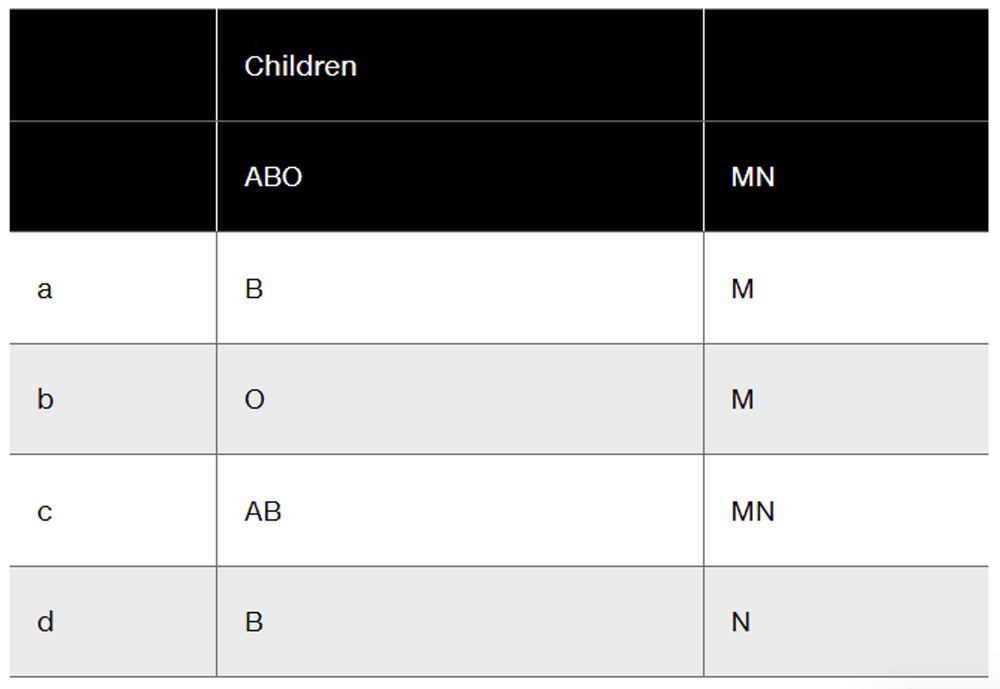How were early geneticists able to ascertain inheritance patterns that did not fit typical Mendelian ratios?
Table of contents
- 1. Introduction to Genetics51m
- 2. Mendel's Laws of Inheritance3h 37m
- 3. Extensions to Mendelian Inheritance2h 41m
- 4. Genetic Mapping and Linkage2h 28m
- 5. Genetics of Bacteria and Viruses1h 21m
- 6. Chromosomal Variation1h 48m
- 7. DNA and Chromosome Structure56m
- 8. DNA Replication1h 10m
- 9. Mitosis and Meiosis1h 34m
- 10. Transcription1h 0m
- 11. Translation58m
- 12. Gene Regulation in Prokaryotes1h 19m
- 13. Gene Regulation in Eukaryotes44m
- 14. Genetic Control of Development44m
- 15. Genomes and Genomics1h 50m
- 16. Transposable Elements47m
- 17. Mutation, Repair, and Recombination1h 6m
- 18. Molecular Genetic Tools19m
- 19. Cancer Genetics29m
- 20. Quantitative Genetics1h 26m
- 21. Population Genetics50m
- 22. Evolutionary Genetics29m
3. Extensions to Mendelian Inheritance
Variations of Dominance
Problem 6
Textbook Question
The ABO and MN blood groups are shown for four sets of parents (1 to 4) and four children (a to d). Recall that the ABO blood group has three alleles: IA, IB and i. The MN blood group has two codominant alleles, M and N. Using your knowledge of these genetic systems, match each child with every set of parents who might have conceived the child, and exclude any parental set that could not have conceived the child.


 Verified step by step guidance
Verified step by step guidance1
Step 1: Determine the possible ABO genotypes of each set of parents based on their blood groups. Recall that the ABO blood group alleles are I^A, I^B, and i, where I^A and I^B are codominant and i is recessive. For example, a parent with blood group O must have genotype ii, blood group A could be I^AI^A or I^Ai, blood group B could be I^BI^B or I^Bi, and blood group AB must be I^AI^B.
Step 2: Determine the possible MN genotypes of each set of parents. Since M and N are codominant alleles, a parent with blood group M must be MM, with N must be NN, and with MN must be MN.
Step 3: For each child, analyze their ABO blood group and determine which parental genotypes could produce that blood group. Use Punnett squares or allele combinations to check if the child's ABO blood group is possible from the parents' genotypes. For example, a child with blood group AB must inherit I^A from one parent and I^B from the other.
Step 4: Similarly, analyze the MN blood group of each child and determine which parental MN genotypes could produce the child's MN blood group. Since M and N are codominant, a child with MN must inherit M from one parent and N from the other.
Step 5: Combine the ABO and MN results to match each child with the sets of parents who could have conceived them. Exclude any parental set where either the ABO or MN blood group inheritance is not possible based on the genotypes.
 Verified video answer for a similar problem:
Verified video answer for a similar problem:This video solution was recommended by our tutors as helpful for the problem above
Video duration:
2mPlay a video:
Was this helpful?
Key Concepts
Here are the essential concepts you must grasp in order to answer the question correctly.
ABO Blood Group Inheritance
The ABO blood group system is determined by three alleles: I^A, I^B, and i. I^A and I^B are codominant, meaning both can be expressed if present, while i is recessive. Blood types A, B, AB, and O result from different allele combinations, with O being homozygous recessive (ii). Understanding parental genotypes helps predict possible offspring blood types.
Recommended video:
Guided course

Organelle Inheritance
MN Blood Group and Codominance
The MN blood group is controlled by two codominant alleles, M and N. Individuals with genotype MM express M antigen, NN express N antigen, and MN express both antigens. Since both alleles are equally expressed, offspring inherit one allele from each parent, allowing prediction of possible MN phenotypes.
Recommended video:
Guided course

Variations on Dominance
Genetic Compatibility and Exclusion
By comparing the blood groups of parents and children, one can determine if a parental pair could have conceived a child based on possible allele combinations. If a child's blood type cannot be derived from the parents' genotypes, that parental set is excluded. This principle is used in paternity testing and genetic counseling.
Recommended video:
Guided course

Descriptive Genetics

 4:37m
4:37mWatch next
Master Variations on Dominance with a bite sized video explanation from Kylia
Start learningRelated Videos
Related Practice
Textbook Question
418
views
